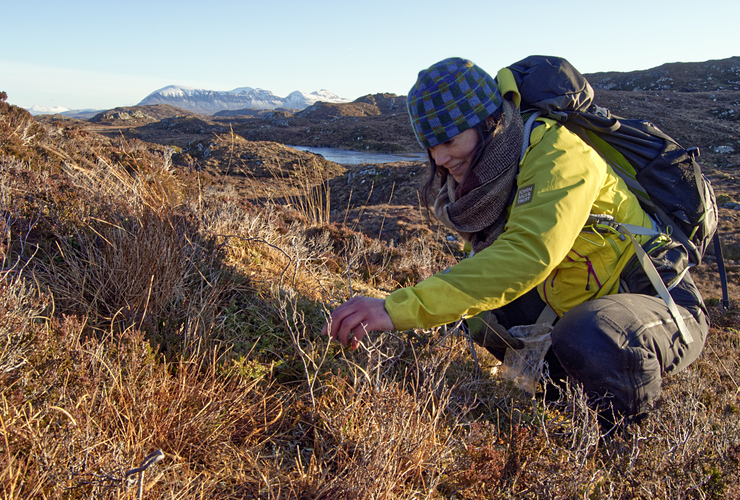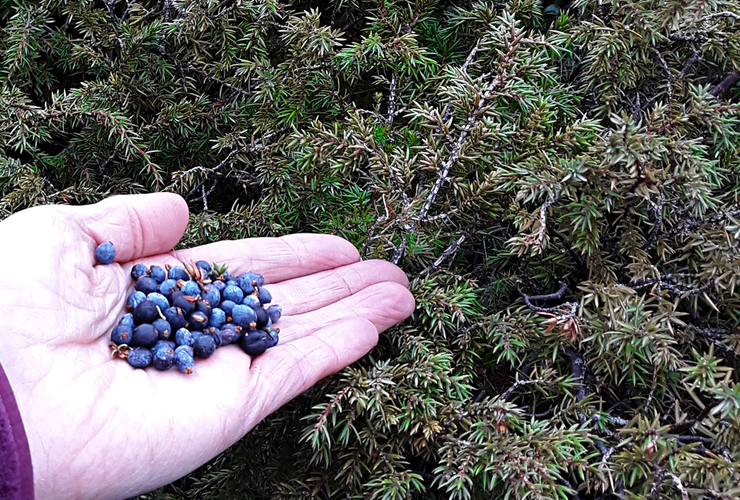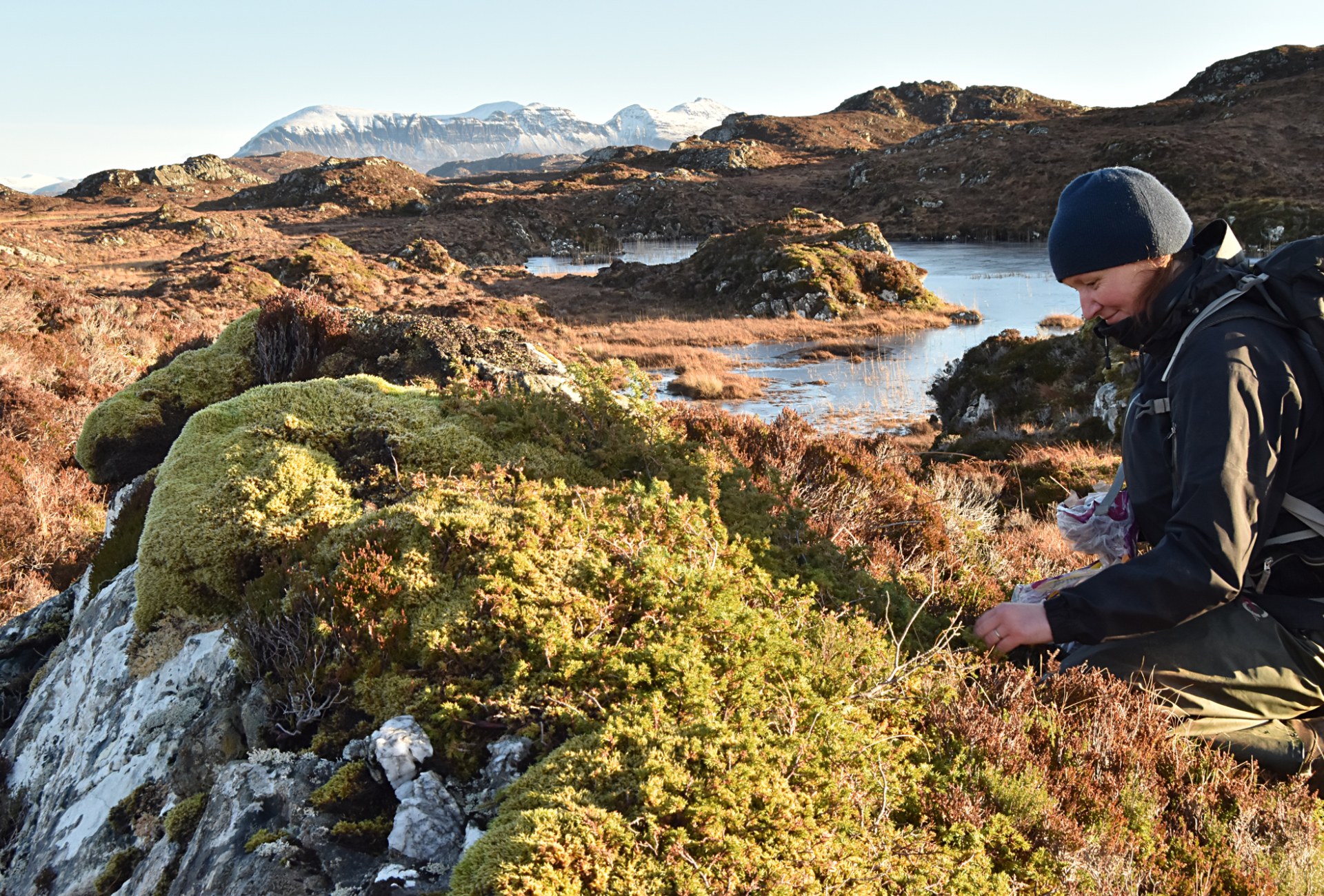Field notes: Iced juniper berries
Quinag conservation officer Romany tackles the prickly subject of juniper seed collecting
With snow on the hills and ice underfoot we set off on a juniper berry collecting walk into the hinterland of lochans and knockans. The day was organised by the Coigach & Assynt Living Landscape Partnership's Little Assynt Tree nursery to replenish juniper stocks for growing on.

Picking juniper berries is slow tricky work, but fortunately several volunteers turned up to help. Dressed warmly we set off on an hour long walk to get to the juniper berry site. I was glad of the extra layer of thermals to keep out the cold.
Along the track a golden eagle appeared flapping leisurely above us. We paused, holding our breath as it flew overhead; circling quite close before moving on.
Juniper is a notoriously slow growing plant. It takes over a year for seeds to germinate and another year before the actual seedling appears. It is susceptible to burning and overgrazing. However it has become a popular species in planting schemes looking for more diversity. The berries are aromatic and popular in cooking for stews and venison dishes and for flavouring gin.
Nick the tree nursery manager explains only the black berries should be picked and not the green ones which are still yet to ripen. This is unfortunate as there is a mass of green berries next to my feet and not a black one in sight.
This is a prickly business, but soon there were cries of delight at finding a single black berry. The novelty wears off and we go silent as the coldness sets in.
After several hours the amount collected still looks quite pitiful and the tips of fingers become sore from repeated spikes.
The juniper growing here is prostrate and low growing rather than the upright variety that is more common in the south. The juniper here is tough and can withstand the severe buffeting of west coast winds and the salt laden rain. The trunks are gnarled and twisted but despite this the branches fringed with olive green spikes looks somehow magical amongst bog and heather.
As stiff ice-chilled fingers gingerly negotiate the sharp fronds our bags fill very slowly with black berries. It cannot be done hastily. After several hours the amount collected still looks quite pitiful and the tips of fingers become sore from repeated spikes.

Sometimes a stash of berries can be found under the bush. Unfortunately these are mouse nibbled are often just hollowed out shells. The seeds are damaged when eaten by sharp mouse teeth and their droppings do not help scatter the seed like a thrush does with rowan berries.
Back at the tree nursery the seeds will be extracted from our small collections of berries where they stratified in cold, mouse proof storage and then tended and nurtured into new young plants.
As the light dwindles the wind whips up and bare fingers at this point cease to function. It is time to go home.


